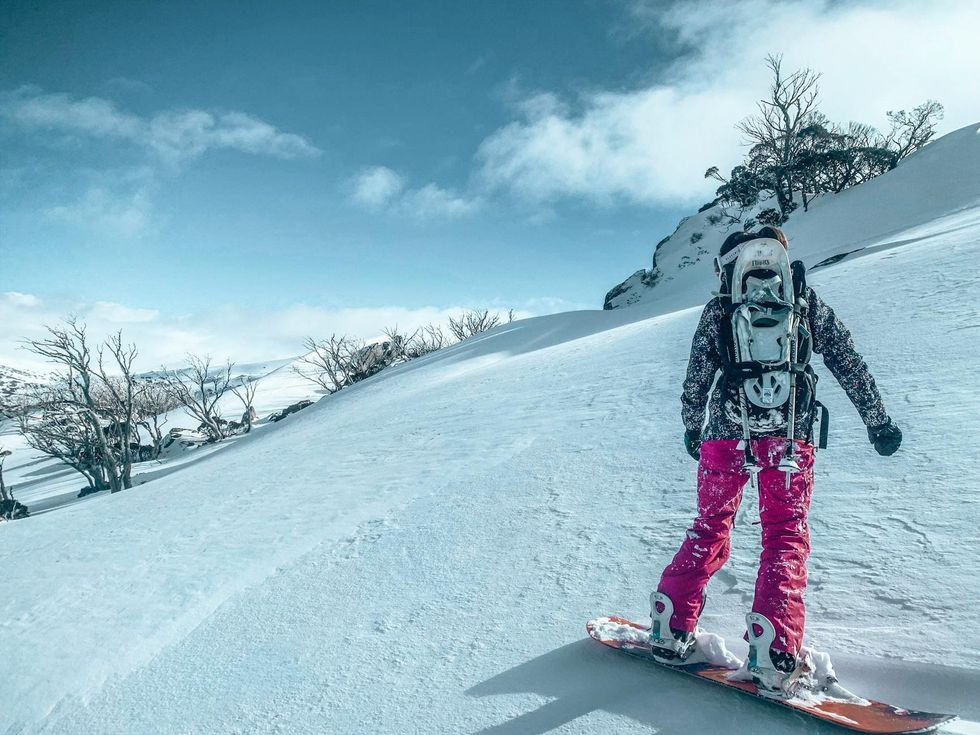First invented as a means to cross frozen wetlands and marshes, skiing was a widely utilized mode of transportation in Europe and Central Asia. Skiing goes back to the Neolithic period (8,000BCE-6,000 BCE). From the ancestors of the Sami to ski-like artifacts found in northern Russia, skiing was key to travel and hunting in history.
Paintings, carvings and writings throughout history has given archeologists a story to follow from 3,000BCE to 1,300BCE. A short timeline is noted below.
- 3,000BCE - Russian and Scandinavian rock paintings
- 2,500BCE - Norwegian rock carvings of a skier
- 1,300BCE - Norse mythology denote the God and Goddess of Skiing(Ullr and Skade)
Fast forward to the early 13th century and backcountry skiing legends were being born. The Birkebeiners, Norwegian military skiers, took the King's 2 year old son to safety over the Dovre Mountains during a Civil War. This same route (Rena to Lillehammer) was turned into the Birkebeiner race in 1932.
1700s
As time pushed forward, skiing stories began showing up in published works in the late 17th century (1689). Some of these accounts included "Die Ehre des HerzogtumesKrain" by Austrian Valasavor. As 1700s approached, skiing began to evolve into a recreational sport, particularly in Norway. During this time, turning styles (Telemark and Christie) were created to control speed. With the focus on speed, design changes began to happen, making skis lighter, more narrow.
1800s
Throughout the 19th century several skiing hallmarks occurred. The cambered ski was invented, first documents of recreational skiing in the USA took place, Alpine skiing was formed and ski construction evolved. Before the cambered ski, skis were made thick and heavy, so as not to sink in the middle. Then in the late 1800s, hickory skis were produced in Norway. These skis were tougher, thinner, lighter and capable of flexing. Before the century closed out, the first two-layer laminated (hickory, spruce or basswood) skis were made. This type of ski was lighter, more flexible and cost effective to make. The only issue with the laminated skis, they came apart because the glue wasn't waterproof.
1900s
By 1905, The U.S. Ski Association (USSA) was formed as the governing body for Olympic snow sports. By 1924, the FIS, Federation Internationale de Ski was founded and Nordic events were held in Chamonix, France at the first Olympic Winter Games. The late 1920s saw the steel edge be invented along with the idea of aluminum for ski construction. It wouldn't be until 1945 that aluminum skis would be produced.
From the 30s to the 40s, skis were no longer de-laminating, chair lifts were invented and three-layer laminated skis came on the scene. Better glue became the catalyst for propelling skis in the 20th century during this time. R.E.D. Clark of Cambridge, England, invented Aerolite for airplane construction. This formaldehyde based glue would go on to revolutionize ski construction, setting the stage for metal and plastic ski invention.
In 1945 the first cellulose plastic base for skis were made in France, and in 1945, as noted above, first aluminum ski (with wood core) was manufactured. Before the 1950's arrived, Howard Head created a metal ski that went on to be commercially successful. This ski was pressure-bonded aluminum with a plywood core. It also had continuous integral steel edges and plastic side walls.
In addition to chairlifts, technological and chemical advances aided in further popularizing skiing for leisure and sport. In 1952 at Grossinger's Resort in New York, man-made snow was created. In the 50s and 60s, the first polyethylene base is introduced in Austria and the first successful plastic fiberglass ski was invented (in 1968 fiberglass would replace both wood and aluminum). With new skis came the need for new ski boots. In 1962 the first plastic-shelled ski boot was invented by Bob Lange. Also, to further the sport of skiing the World Cup of ski racing was created in 1967.
In the 70's, 80's and 90's various material improvements took place. From plastics and fiberglass to Kevlar and carbon fiber, high-strength materials helped to contribute in strengthening, damping, resiliency and torsion of skis. Check out below more history markers as skiing headed into the 21st century.
- Sintered polyethylene begins to replace extruded polyethylene as a base material
- Ski films are widely distributed
- Ski vacation grew and was more inclusive
- Shaped ski was created
- High-speed chairlifts were made
- The wide, fat ski was created
- Snowboarding became popular



















